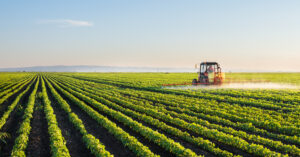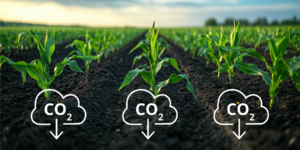BiOWiSH Technologies recently hosted an exclusive webinar to unlock the science behind fertilizer enhancements. Featuring Alex Susko, Agronomy Product Manager, Haley Nolen, Applied Scientist, and Tami Fraser, North American Sales Manager from BiOWiSH, the webinar provided a scientific overview of optimizing fertilizer efficiency, particularly nitrogen (N) loss pathways and providing innovative solutions to reduce nutrient loss. Attendees learned differences between narrow-scope (inorganic enhancements) and broader scope (naturally derived enhancements) for chemical fertilizers and a better understanding of the modes of action of the many common fertilizer enhancements currently available in the marketplace. Certified Crop Advisors and Certified Professional Agronomists in the United States, Canada and Mexico were able to earn 1.0 CEU in Nutrient Management through the American Society of Agronomy.
Key takeaways include:
- What Exactly Are Enhanced Efficiency Fertilizers (EEFs)? – There is often confusion about what exactly EEFs are. According to the Association of American Plant Food Control Officials (AAPFCO) enhanced efficiency fertilizers describe fertilizer products with characteristics that allow increased nutrient uptake in the plant and reduce potential of nutrient losses to the environment, including gaseous losses, leaching or runoff when compared to an appropriate reference product. Commonly understood features of EEFs for nitrogen include controlled/slow release, urease, and nitrification inhibitors. All of these are designed to reduce nitrogen losses from different sources via inorganic chemistry. Emerging EEF technologies include nitrogen cycle influences via N fixation or other loss mitigation through microbial approaches.
- When to Apply Traditional EEF Interventions to Combat Common Nitrogen Loss Pathways – Common nitrogen loss pathways that growers face include ammonia volatilization, nitrate leaching, and denitrification. To slow ammonia volatilization, urease inhibitors should be applied along with or immediately before applying urea-based fertilizers. To combat nitrate leaching, use slow-release, controlled release fertilizers and nitrification inhibitors. Apply it early in the growing season or just before planting depending on your crop’s nutrient uptake. While there are no products to directly inhibit denitrification, nitrification inhibitors work to reduce N loss via denitrification by keeping nitrogen in the ammonium form, reducing the amount of nitrate available for denitrification.
- Emerging Fertilizer Enhancement Technologies – New fertilizer enhancement technologies have emerged that target other aspects of plant growth. They are designed to increase nutrient use efficiency and reduce environmental losses. Classes of naturally derived enhancements that affect nutrient uptake indirectly include humic substances, carbohydrates and microbials. Regarding microbial products specifically, there are many products on the market that are either naturally occurring or genetically modified that claim nitrogen fixing capabilities as seed coatings, soil inoculants or in-furrow treatments. Natural microbial fertilizer enhancements have gained popularity because of their unique mode of action that works with the soil, native biology, and the plant to optimize yield potential.
- What to Look for in Emerging EEF Products – When evaluating new products, it’s essential to research them thoroughly. First, consider the mode of action. Different modes of action can impact the loss pathways that a fertilizer enhancement is able to mitigate. Also, consider how the enhancement is used. Some enhancements are meant to be applied with fertilizer or are components of fertilizer itself, while others require separate applications. A crucial aspect to also consider is how much data is available to support product claims. Look for extensive published studies that can demonstrate proven efficacy and a win rate that indicates a high reliability of performance in actual on-farm management practices.
- How the BiOWiSH® Fertilizer Enhancement Complements a Fertilizer Program – As proven by its 86% global win-rate, BiOWiSH® Enhanced Fertilizer has consistent performance across a broad range of operating conditions, plant types, soil types, and management practices. It is compatible with other fertilizer enhancements and versatile enough to be applied at planting, any time prior to a plant stage that still allows for soil contact, or as part of a fall application. It also has the ability to synergize with other chemical fertilizer enhancements to mitigate early season application risks, while still achieving the long-term benefits of increased yield and improved soil conditions.
To watch the webinar in its entirety, visit www.biowishtech.com/resource/webinar-fertilizer-enhancements-for-agronomic-and-business-value/.





